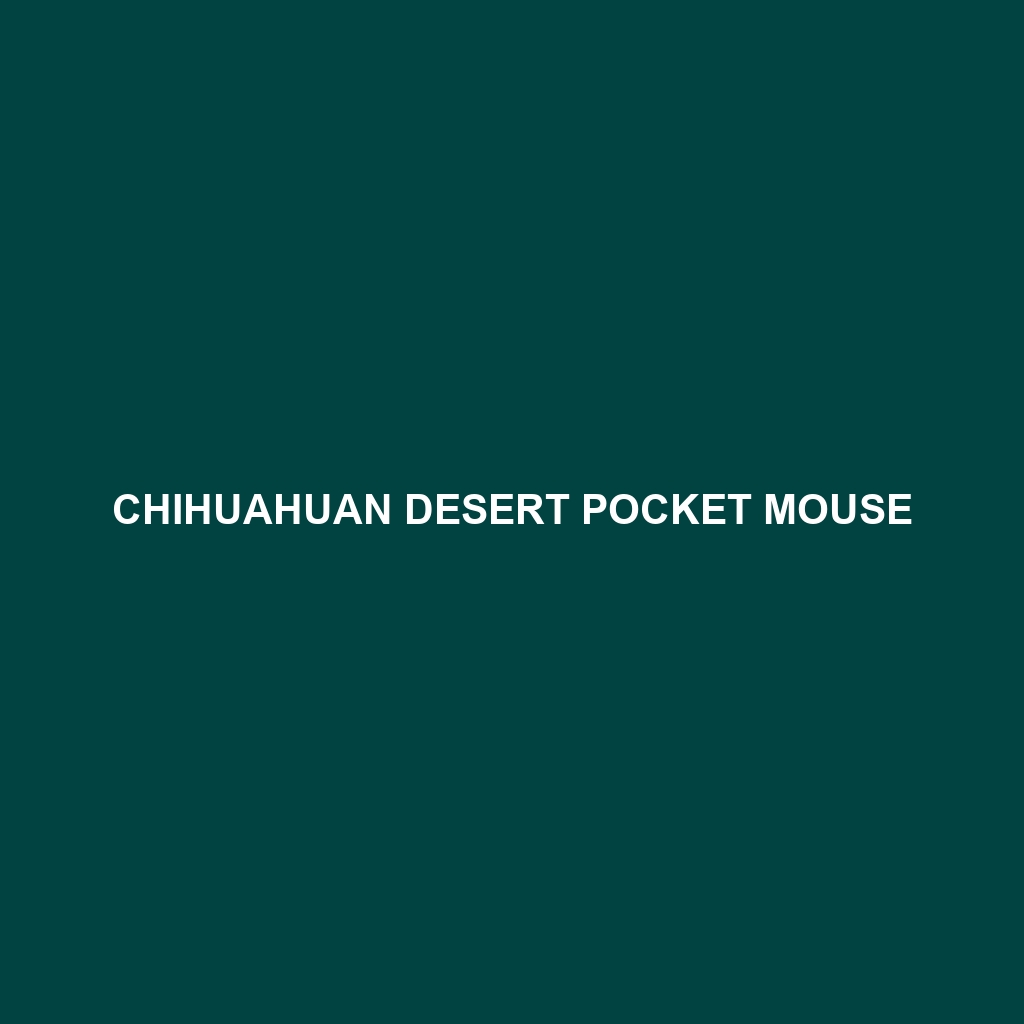Chihuahuan Desert Pocket Mouse
Common Name: Chihuahuan Desert Pocket Mouse
Scientific Name: Perognathus flavus
Habitat
The Chihuahuan Desert Pocket Mouse is primarily found in the arid regions of the Chihuahuan Desert, which spans across parts of New Mexico, Texas, and northern Mexico. This habitat features open grasslands, scrub, and sandy dunes that provide essential shelter and foraging opportunities. The climate is characterized by hot summers and mild winters, with low annual rainfall, creating a unique environment for this species.
Physical Characteristics
The Chihuahuan Desert Pocket Mouse exhibits a small size, typically measuring around 10 to 14 centimeters in total length. Its coloration is generally a mix of light brown and beige with darker markings on the back, providing excellent camouflage against desert sands. The mouse’s large, round ears and long, tufted tail are distinctive features, aiding in thermoregulation and balance as they navigate their arid environment.
Behavior
This species is primarily nocturnal, engaging in foraging and social behaviors during the cooler night hours to avoid daytime heat. Chihuahuan Desert Pocket Mice are known for their opportunistic behavior, utilizing burrows to escape predators and harsh weather. They are also capable of remarkable agility and speed, allowing them to evade threats effectively.
Diet
The diet of the Chihuahuan Desert Pocket Mouse consists largely of seeds, fruits, and other plant materials, highlighting its role as a granivorous forager in the desert ecosystem. They often consume seeds from a variety of desert plants, which are crucial for their survival, especially during dry periods. This species also has the ability to store surplus food in their burrows, ensuring a steady food supply when resources are scarce.
Reproduction
The Chihuahuan Desert Pocket Mouse breeds seasonally, typically during the warmer months from spring to early fall. After a gestation period of about 21 to 29 days, females give birth to litters of usually two to five young. The offspring mature quickly and are often weaned within three weeks, allowing for multiple generations to coexist within a single season.
Conservation Status
Currently, the conservation status of the Chihuahuan Desert Pocket Mouse is classified as Least Concern according to the IUCN Red List. However, habitat loss due to urbanization and agriculture poses a potential threat to their populations, making ongoing monitoring of their status essential for future conservation efforts.
Interesting Facts
The Chihuahuan Desert Pocket Mouse can leap distances over two feet, a skill which aids in escaping predators and navigating across sandy terrain. Additionally, their ability to thrive in arid environments demonstrates remarkable adaptations, allowing them to survive with minimal water intake.
Role in Ecosystem
As a granivore, the Chihuahuan Desert Pocket Mouse plays a vital role in its ecosystem by aiding in seed dispersal and contributing to the health of the desert flora. Their burrowing activities help aerate the soil, promoting plant growth and supporting other wildlife in the region. Moreover, they serve as a food source for various predatory species, making them an integral part of the desert food web.
